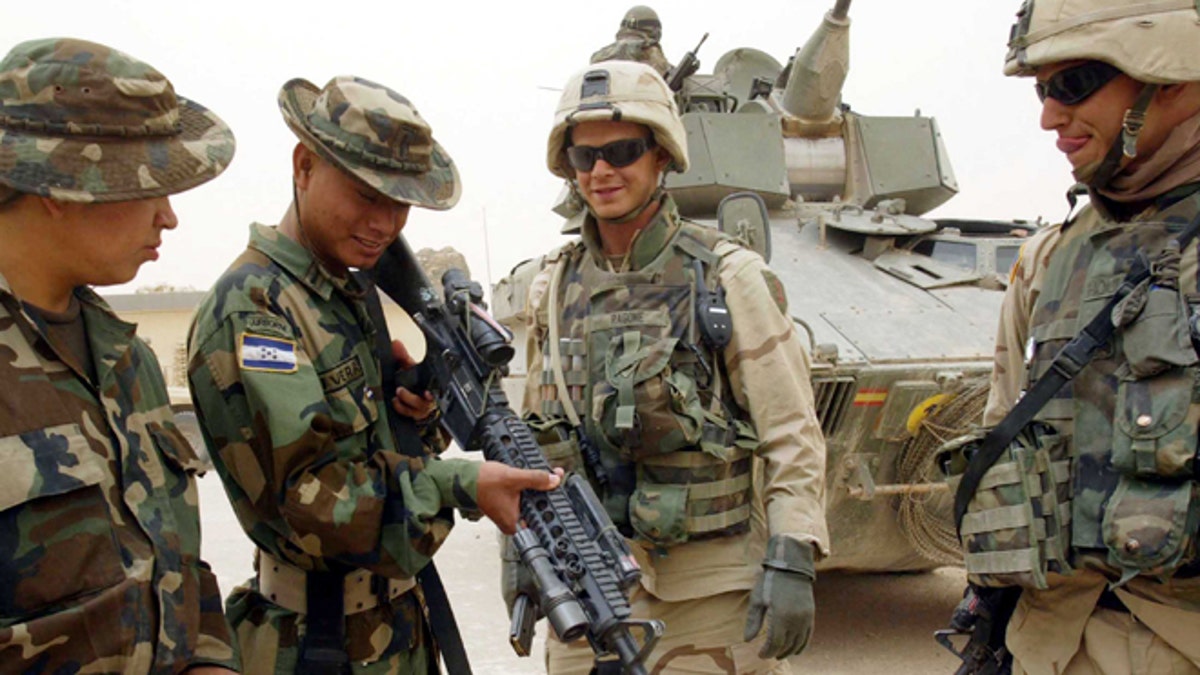
(Getty Images)
A new report details how the United States has tripled its Special Operations training missions in Latin America in recent years as the region struggles to deal with both a rise in violent criminal activity and allegations of human rights abuses by armed forces.
Using information obtained through the Freedom of Information Act, researchers at the Washington Office on Latin America (WOLA) discovered that in the years between 2007 and 2014, the U.S. military saw training missions in Latin America known as Joint Combined Exchange Trainings (JCET), rise from 12 to 36, a period when overall military aid to the region was decreasing.
In the same time period nearly 4,000 U.S. Special Forces trained around 13,000 Latin American security personnel at a cost of $73 million.
The big problem with that, WOLA notes in its report – which was co-authored by Sarah Kinosian and Adam Isacson – is that "as Special Operations Forces activity grows, the already low amount of transparency and available information about their actions is shrinking."
The ramping up in Latin America fits a trend that has been employed by the U.S. military since the September 11, 2001 terrorist attacks. Since then, Special Operations Forces have doubled in number to approximately 70,000 and the budget for this training has tripled to more than $17 billion per year.
In 2015, the U.S. military deployed these training forces to 135 of the world’s 196 countries.
The increase in JCET missions in Latin America happened during the same time period as overall decline in U.S. military and police assistance to the region due to the scaling back of large aid programs like Plan Colombia and the Mérida Initiative.
The stated purpose of the JCET missions is both for U.S. military personnel to maintain and practice new combat skills, such as urban combat or riot control, while also training their Latin American counterparts in military tactics. WOLA, however, added that an alternative purpose for these training missions is to gain “regional access with a minimal footprint" and to “enhance U.S. influence in host countries."
According to the report, "The documents show a shift in focus from South America to Central America, describing the region becoming 'increasingly plagued with violence and illicit trafficking.'"
The Latin American country that saw the most visit by the Special Operations Forces was Honduras, which had 21 missions over the eight-year period studied. During this time there were numerous allegations levied against Honduran security forces for murder, torture, rape and extortion, but most went uninvestigated and unpunished.
El Salvador and Colombia had the second-most JCETs with 19 each.
Honduras, along with El Salvador and Guatemala, make up the so-called Northern Triangle of Central America , which is considered one of the world's most violent areas, with gangs, drug traffickers and organized crime as the key criminal actors. In 2015, a combined 16,527 murders were committed in Honduras, El Salvador and Guatemala, where 31 million people live, most of them mired in poverty.
Violent gangs such as the Mara Salvatrucha (MS-13) and Barrio 18 have been plaguing the Northern Triangle countries for years and are partly responsible for the high regional murder rate – but the WOLA report also identifies the countries’ security forces for adding to the violence.
The U.S. State Department has reported that Honduran armed forces have been implicated in “unlawful and arbitrary killings and other criminal activities,” and, in El Salvador, it also found military and police to have been involved in “unlawful killings and cruel treatment.”
“Special Operations Forces deployments lack effective safeguards to make sure that 'partner' units do not kill, torture, or abuse their own people,” the WOLA report noted.
